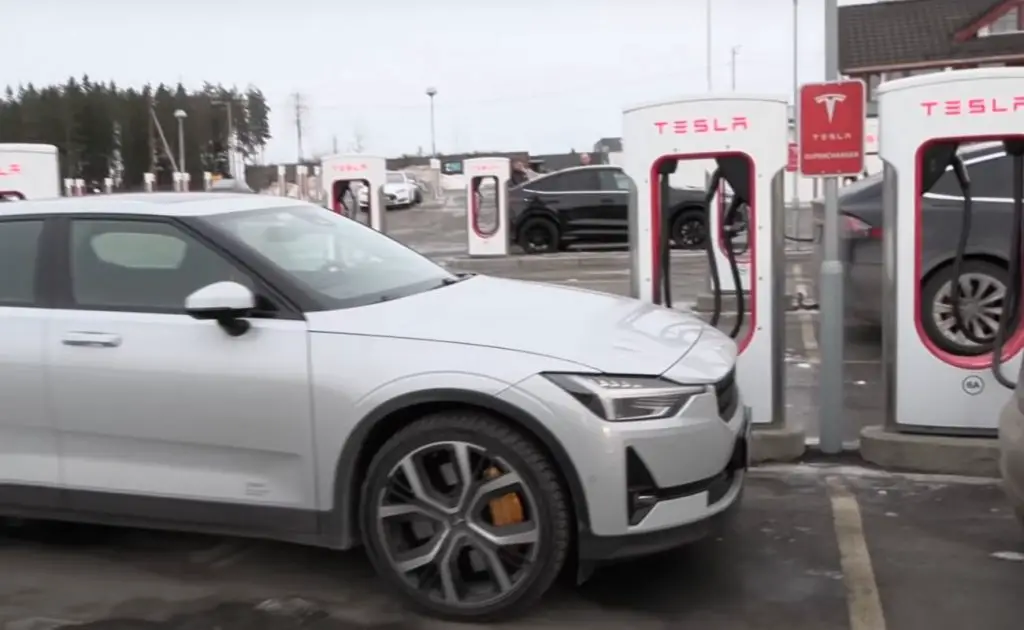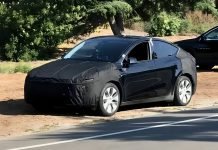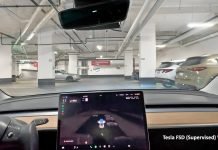Electric vehicles are gaining in popularity as more people recognize their potential to reduce emissions and provide a cleaner, quieter driving experience but some still are just curious to be part of “that-hip-cool-circle” of EV owners. Some are avid Tesla fans too, in there.
And why not, Tesla is certainly the top industry leader when it comes to electric vehicles and autopilot-savvy vehicles on the road. No, we are not talking about the ravishing tweets of its dynamic CEO, but the Tesla fanbase is still massive.
You might as well consider it as a big FOMO.
Though there is nothing wrong with any reason to try EVs but owning an EV isn’t without its challenges, from finding charging infrastructure to dealing with range anxiety.
Here, we look at the common issues that come with EV ownership and explore how they can be addressed.

Table of Contents
EV Owners Challenges
Owning an electric car is no joke – it can be a challenge! For one thing, the charging infrastructure is still incredibly limited. Sure, some cities and states are making strides in this area – but that doesn’t help if you live far away from those areas.
And even when you do find stations to charge your car, you might be left waiting in line for a while to get your turn. Then there’s the cost – electric cars are expensive and even more so if you need to invest in a charging station at home.
Moreover, let’s not forget about range anxiety: no matter how much you love your electric car, it won’t get you very far if you need to go long distances. So, while electric automobiles are undeniably cool, they too come with their own set of unique challenges that prospective owners should be aware of.
Charging Stations
One of the biggest challenges to owning an electric car is access to charging stations. With limited infrastructure, it can be difficult to find places to charge up when you’re out and about. This makes it hard to plan long journeys or take trips away from home.
Some public charging points are expensive, meaning you could end up spending more than you bargained for on top of your fuel costs. Tesla Supercharger network is the biggest EV charging station network with over 40,000 stations globally.
Initially, they gave free charging credits to Tesla owners but now charge for Supercharger use.
Finding reliable charging infrastructure can be a challenge for EV owners, particularly those living in rural areas. Luckily, many states are taking steps to improve access by introducing incentives for businesses and municipalities to install public chargers.
Homeowners can also invest in faster home-charging systems to make recharging EVs better but the cost of installation may be daunting for some. Moreover, some do not have the space to have charging stations in their homes.
Travelling with an electric car can be risky, just as it is for a gas car. Imagine having to carry your own hose to refuel your ICE vehicle at a station. Many electric charging stations do not have the required compatible charging cables at their stations leaving EV owners puzzled.
So make sure to bring along charging cables in case you find yourself at an electric vehicle station without wires—you don’t need to get caught unprepared and unable to refuel.
Charging Time
One of the biggest challenges with owning an electric car is charging time. It can take hours to charge your electric car battery, and that means extra time added to your errands or trips.
Plus, you have to make sure you have access to a charging station when you need it. This could be inconvenient if you’re travelling and don’t have access to a charging station.
If you’re in an area with limited or no charging stations, it could be a real challenge to keep your electric car going. It’s important to consider the availability of charging stations before deciding if an electric car is right for you.
However, real EV owners do plan their travel accordingly and keep a route plan to include charging needs. But people living in a high-rise or requiring frequent travel trips might feel
anxious to own an EV.
Different charging speeds can mean wildly different wait times, so it’s important to research and understand the charging capabilities of whatever electric car you’re looking at. Depending on your lifestyle, you might want a vehicle with faster charging speeds or one that takes less time to charge up fully.
Grid Capacity
As more and more people switch to electric cars, there will be a higher demand for electricity from the grid. To keep up with this demand, the grid will need to be expanded and improved, which is no small task. Not only would this involve a lot of money and time, but it would also have an environmental impact since many of the materials needed for grid expansion come from non-renewable sources.
By swapping out the whole national fleet of cars and trucks that run on gasoline for electric vehicles (EVs), millions of people will be relying on the electrical grid in unprecedented ways in the coming years.
Hence, there must be a rise in power production to cater to these EVs without overburdening the electrical system. The Department of Energy forecasts that, with a noteworthy quantity of electric cars hitting the roads in years to come, energy demand could soar by 38% by 2050.
This would induce an overhaul in how humanity consumes energy and provides an array of possibilities for progress and ingenuity within the sector.
Range Anxiety
Another issue is the range of electric cars. This, combined with charging stations being few and far between, creates something known as ‘range anxiety’. Range anxiety is when people are concerned about running out of battery before they can reach their destination – a valid concern when faced with limited charging options.
As electric vehicles rely on battery power, one of the primary concerns for EV owners is range anxiety or the fear that you’ll run out of charge before reaching your destination.
Just think, you’re on a long journey and your EV just dies – yikes! That’s not something any of us would want to experience while going out with splendid travel plans.
Although more and more charging stations are being set up all over the world, it is still a problem for electric vehicle owners. Until a more reliable network is established, electric cars can be a bit of a hassle.
To combat this, many manufacturers are equipping their EVs with longer-range batteries and more charging points. Moreover, some areas now offer roadside assistance programs to help stranded EV drivers get back on the road.
EV Costs
Electric vehicles are often more expensive than their petrol-powered counterparts, so this can be a major barrier for anyone looking to buy one. EV batteries have to be changed or serviced every few years, which can add to the cost of ownership as well.
Electric vehicles are typically more expensive than traditional gas-powered cars, making it harder for those with a limited budget to purchase one. Tesla plans to come up with a cheaper entry-level EV for a long-time now but still is beaten by Nissan Leaf and Chevy Bolt.
You can get Leaf for as low as $25,600, but Tesla Model 3 doesn’t come any cheaper than $42,990. But then you cannot compare both cars’ performance as well.
But why EVs are so expensive in the first place?
With lithium-ion technology, which consists of rare earth materials, being used to produce the batteries for electric cars, manufacturers are faced with a high cost. Moreover, the global chip shortage adds to the cost. This is especially true in the case of larger vehicles.
Manufacturers may not even build the cars themselves, rather opting to turn to off-the-shelf software and expanding it instead. What’s more, EVs have been designed with fewer parts than conventional automobiles.
EV Waiting Time
Owning an electric car might be challenging, especially when it comes to waiting for the delivery of your sweet ride. It’s like waiting for Christmas every day!
Most EVs need a few weeks to arrive after you place your order. That’s because most cars are made-to-order and take longer than traditional gas-powered vehicles. What’s more, any custom options that you select for your ride could extend the wait time even further.
How long do you usually have to wait? The exact waiting time may depend on the manufacturer and type of electric car that you purchase, but it can range from a few weeks or months to even over a year.
Battery Degradation
We all know what it feels like when our phones die after a long day at work or school. So, we can only imagine how much worse it would be if our cars ran out of battery one day, just like that! Unfortunately, electric car drivers face this very issue on a daily- battery degradation.
From range anxiety to a general absence of charging infrastructure, battery degradation is yet another factor that makes Electric Vehicles unappealing and less accessible for the average consumer.
Depending on battery chemistries, Lithium batteries can last anywhere from a few hundred to several thousand cycles.
As batteries age, their charge cycle diminishes, and they can no longer offer the same range of performance as when first purchased. This decrease in battery capacity is referred to as Battery Degradation.
Over time and with frequent use, electric car batteries tend to wear down and lose capacity, leading to decreased range of the vehicle. However, many users claim that going easy on battery charging helps them delay battery degradation.
Reliability On EVs
One of the main challenges powertrain design engineers face is creating components that can stand up to environmental conditions and mechanical shocks. These elements, such as the battery, motor, and power electronics, are crucial to a vehicle’s performance but are susceptible to damage from external forces.
The design of thermal management systems is essential for guaranteeing the reliable and efficient operation of e-powertrain components. Suppliers and OEMs must take into account material properties, non-uniform distribution of current, voltage, magnetic flux, as well as component temperature. The performance levels between any one component will influence the overall flux distribution across all others.
But why people do not lean on EVs enough? They are too accustomed to driving ICE cars. This means they still are not aware of the nuances of driving an electric vehicle. They might find it difficult to get used to any hiccups or problems they might face while driving an EV.
However, problems or breakdowns of an ICE car are easily tolerated and ignored by ICE owners.
Continued Supply Chain Challenge
The abundant global upheavals, mainly attributed to COVID-19, have caused a scarcity of key components needed for the construction of electric vehicles. Semiconductors and lithium-ion batteries are two examples that suffer from an insufficient supply chain that can’t keep up with growing demand. Structural issues mean these materials still do not possess an adequate supply network yet.
As some American automotive companies like Tesla strive to cultivate their own supply chain, others persistently depend on production-outsourcing and foreign imports for semiconductors and other components.
Fortunately, some organizations in Asia are teaming up to source new materials for battery manufacturing and repurpose materials from used batteries to reduce the supply burden while doing that. The future seems brighter for electric vehicles!
Why Do EV Buyers Fear Going Electric?
For many potential customers who are considering converting to electric vehicles, “range anxiety” often stands in the way of making that leap. When they don’t feel comfortable knowing there will be a suitable charging option when needed, it becomes almost impossible for them to make the switch from traditional internal combustion engine (ICE) cars.
Although the lack of a universal DC fast-charging, also known as a Level 3 socket may seem to offer manufacturers an opportunity for experimentation and innovation in the short term, it is harmful to EV owners’ long-term interests.
Many Original Equipment Manufacturers (OEMs) argue against setting a standard early on; however, this creates more confusion for consumers rather than providing them with clarity.
What To Expect In The Future?
The EV industry is fairly young if you see the big picture, and the technology is rapidly advancing. But there are still some challenges to owning an electric car. The cost of ownership for EVs is usually higher than traditional petrol cars in a LONG RUN only when you have to replace the battery.
You have to pay upfront for the more expensive battery and other components that form the heart of your EV but largely the in-between cost is way smaller than ICE cars.
In stark contrast to pharmaceutical companies who are required to provide thorough disclosures concerning their drug pipelines, development phases, and clinical trials; it’s difficult to identify the various stages of progress or what features require so much capital – let alone why R&D specialists are being hired.
Electric vehicle manufacturers (and even the established car companies) tend to talk enthusiastically about their soon-to-be mass-produced cars, yet they only have thousands of vehicles on the roads with no indication that what they do produce is particularly superior.
With this in mind, it’s difficult to ascertain which EVs are actually good and competitive. Furthermore, many models still cost almost as much as a median US household earns in an entire year which is $67 000!
Whether you can travel 150 miles on a full charge or just a bit beyond, electric vehicles remain cost-effective investments for the majority of individuals.
Despite considerable challenges that impede the adoption and ownership of EVs, notable progress has been made by both government and industry players to overcome these barriers to drive up EV acceptance.
The soaring popularity of EVs will require the execution of universal charging infrastructure, making it easier and more convenient for EV owners to charge their vehicles. Without this essential element in place, EV ownership is likely to remain elusive due to limited access or inconvenient locations.
Bottomline
As a result of this efficiency in design, electric vehicles could become an increasingly viable option for drivers around the world.
The presence of EVs as the most cost-efficient and sustainable solution for mass and personal transportation throughout the nation is becoming prevalent due to advancements in charging infrastructure, improved products, and greater standardization.
Despite these challenges, owning an EV can be a rewarding experience – one that could help reduce emissions while providing a smoother, quieter ride. If you’re thinking of making the switch, be sure to do your research and find out what resources are available in your area. With the right preparation and knowledge, you can enjoy the benefits of going electric without worrying about common issues like range anxiety and maintenance costs.
Ultimately, electric vehicles can be a great investment but it’s important to know what you’re getting into. With the right research and preparation, you can enjoy the benefits of owning an EV without worrying about common issues like range anxiety and maintenance costs.
Now get out there and start exploring the world of EVs- who knows, you might find a companion for life in an EV!



















Just another ev article that confirms my decision to never own one.
Junk